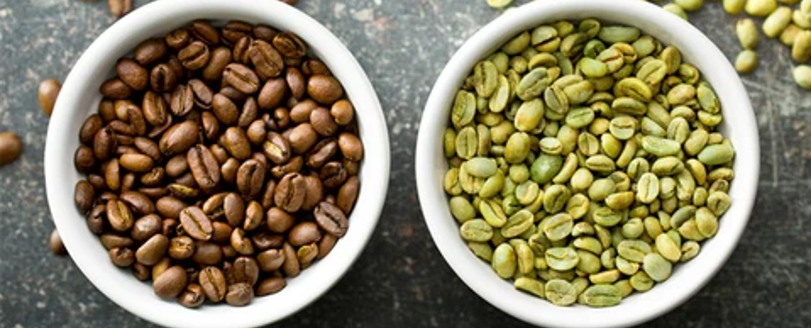 The boom in the specialty coffee industry has been going on for several years. Baristas are tirelessly gaining experience, broadening their knowledge of coffee, honing their skills, and mastering modern techniques. However, the increase of professionalism is missing one of the basic coffee-related areas. Baristas know more about coffee flavours and blending than they do about roasting coffee. Roasting is still largely treated like a secret knowledge, a craft for the chosen ones. So, what is coffee roasting and what does it look like? Let’s find out!
The boom in the specialty coffee industry has been going on for several years. Baristas are tirelessly gaining experience, broadening their knowledge of coffee, honing their skills, and mastering modern techniques. However, the increase of professionalism is missing one of the basic coffee-related areas. Baristas know more about coffee flavours and blending than they do about roasting coffee. Roasting is still largely treated like a secret knowledge, a craft for the chosen ones. So, what is coffee roasting and what does it look like? Let’s find out!
The Secrecy Around Coffee Roasting
 Lighter roasting of high-quality Arabica beans in craft roasteries is a new and, therefore, still underdeveloped area. Everything was trivial as long as all coffee was roasted dark and consequently, every brew tasted very similar.
Lighter roasting of high-quality Arabica beans in craft roasteries is a new and, therefore, still underdeveloped area. Everything was trivial as long as all coffee was roasted dark and consequently, every brew tasted very similar.
The famous third wave of coffee forced the roasters to significantly expand their knowledge, develop analytical and sensory skills, and gain a lot of patience and humility. Coffee roasting has its truths, half-truths, understatements, myths and incorrect assumptions. One person says one thing, the other says otherwise. Knowledge is largely passed on in closed master-student relationships or books, none of which has so far provided decent comprehensive knowledge for people to understand and share.
Going forward you will now witness the foundations of roasting in a simple form and a picture will be painted of what coffee roasting is all about.
Roaster
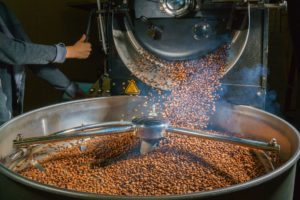 Coffee is roasted in specialized roasters. The vast majority of them are the drum roasters. They are usually powered by fuel in the form of flammable gas. The most important element of such a machine is the coffee roasting drum. It’s a bit like in a washing machine, it’s cylindrical and it spins. Inside the drum there are paddles, which scoop the beans to ensure an even, cyclical, rotational journey through the roasting process.
Coffee is roasted in specialized roasters. The vast majority of them are the drum roasters. They are usually powered by fuel in the form of flammable gas. The most important element of such a machine is the coffee roasting drum. It’s a bit like in a washing machine, it’s cylindrical and it spins. Inside the drum there are paddles, which scoop the beans to ensure an even, cyclical, rotational journey through the roasting process.
The Flame
The flame is located directly under the drum. It turns the fuel supplied to it into a flame, the intensity of which is controlled by the operator. The flame is a source of energy – it heats the drum to the desired temperatures, which roasts the coffee.
The Cooling Tray
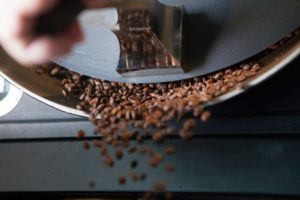 This is found directly under the exit, through which the roasted coffee is dropped at the right moment, thus completing the roast. The beans need to be cooled in order to stop the chemical reactions from taking place in them as quickly as possible. Therefore, just before the drop, the operator starts the mixer and a separate engine draws in the air, cooling the heated material. The mixer arms ensure even distribution of the coffee beans during the roasting process.
This is found directly under the exit, through which the roasted coffee is dropped at the right moment, thus completing the roast. The beans need to be cooled in order to stop the chemical reactions from taking place in them as quickly as possible. Therefore, just before the drop, the operator starts the mixer and a separate engine draws in the air, cooling the heated material. The mixer arms ensure even distribution of the coffee beans during the roasting process.
How to Roast the Coffee
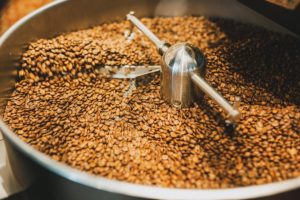 Now that the introduction steps are complete, we can get into the actual roasting process of the coffee beans.
Now that the introduction steps are complete, we can get into the actual roasting process of the coffee beans.
Hot air roasts the coffee, it goes through the drum and has to get away somewhere. The chimney allows dust and particles from the raw material and the smoke generated in the final stage of roasting to escape. Air transported through a separate channel cools the beans. The panel is the roasting command centre. It allows you to click, start, change and switch when necessary.
The Roasting Process
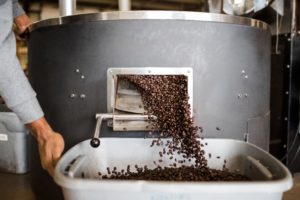 Coffee is a strikingly complex raw material. Even relatively small changes in the pool of substances contained in the beans will bring out completely different characteristics in the ground coffee, not to mention the brew.
Coffee is a strikingly complex raw material. Even relatively small changes in the pool of substances contained in the beans will bring out completely different characteristics in the ground coffee, not to mention the brew.
Here are some popular aromas in the specialty-quality Arabica and the chemical compounds behind them, formed during the roasting process:
- Nuttiness
- Bitterness
- Caramel, honey and
- Fruitiness
The longer the coffee is roasted, the more; acidity decreases, bitterness increases, sweetness rises and then diminishes, and body increases and then decreases.
The Famous Crack
Here is a typical roasting profile designed for professional roasters.
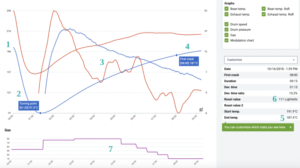 The so-called crack is a very important moment for a roaster. At some point, the water in the roasted coffee beans turns into steam. Increasing pressure builds up and the fruit grows, it begins to crack and steam escapes. This moment is marked by specific noises that can be compared to the loud destruction of air bubbles from the bubble foil. This is what will have the most important influence on the taste of the brew.
The so-called crack is a very important moment for a roaster. At some point, the water in the roasted coffee beans turns into steam. Increasing pressure builds up and the fruit grows, it begins to crack and steam escapes. This moment is marked by specific noises that can be compared to the loud destruction of air bubbles from the bubble foil. This is what will have the most important influence on the taste of the brew.
Roasting Coffee at Home – Will it Work?

The simple answer is yes! You need an oven or a pan or a popcorn maker for this. If you use an oven, it must first be heated to the highest temperature. Coffee beans should be evenly distributed on the baking tray and then put into the oven. When roasting coffee at home, you cannot control changes in coffee temperature, so do not leave the oven and wait for the first crack. What happens next depends on our trials and experiments. Remember that after taking it out of the oven, the coffee should be cooled down. If you choose to roast coffee in a pan, the rules are similar. The coffee must be put into a dry, hot pan, but throughout the process you need to stir the beans so that they roast evenly. You wait for the crack, then observe the colour of the beans, and then remove them from the pan and cool them down. If you have a popcorn machine, you don’t have to worry about mixing the beans.
Coffee Roasting, as you have now read, is a very complex and delicate art if you are trying to get the perfect blend and flavours. If you want to mess around and create your own coffee bean roasts, it is indeed possible, but it will not yield the professional results that come from experienced coffee roasters. Coffee Roasting is in essence an art form that achieves extraordinary results.
Now that you have had an inside look at coffee roasting and the intricate process involved, why not visit the Blendly website and choose or create a coffee blend where the roasting has already been done for you, all you have to do is the fun part, choosing your coffee.

